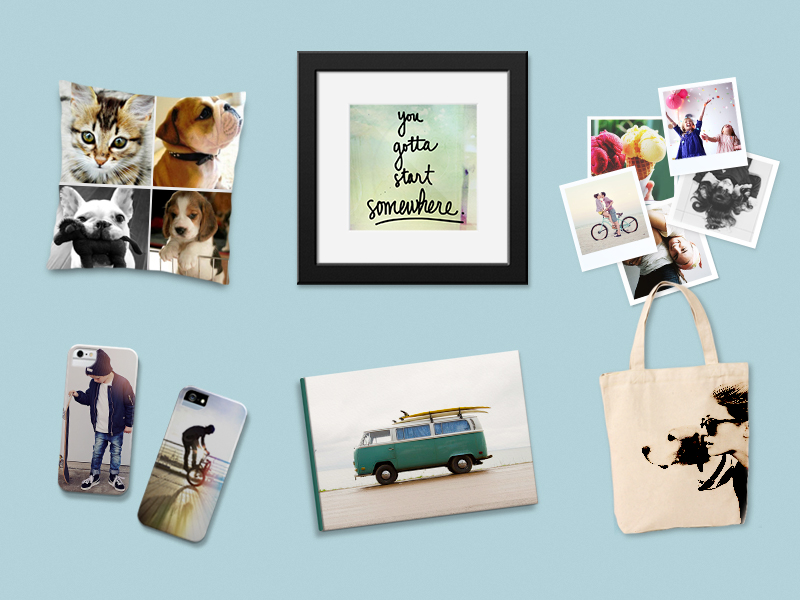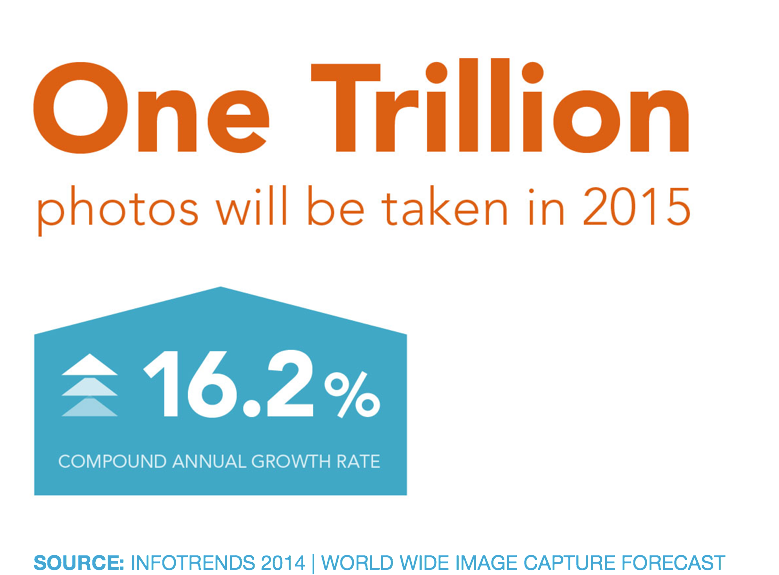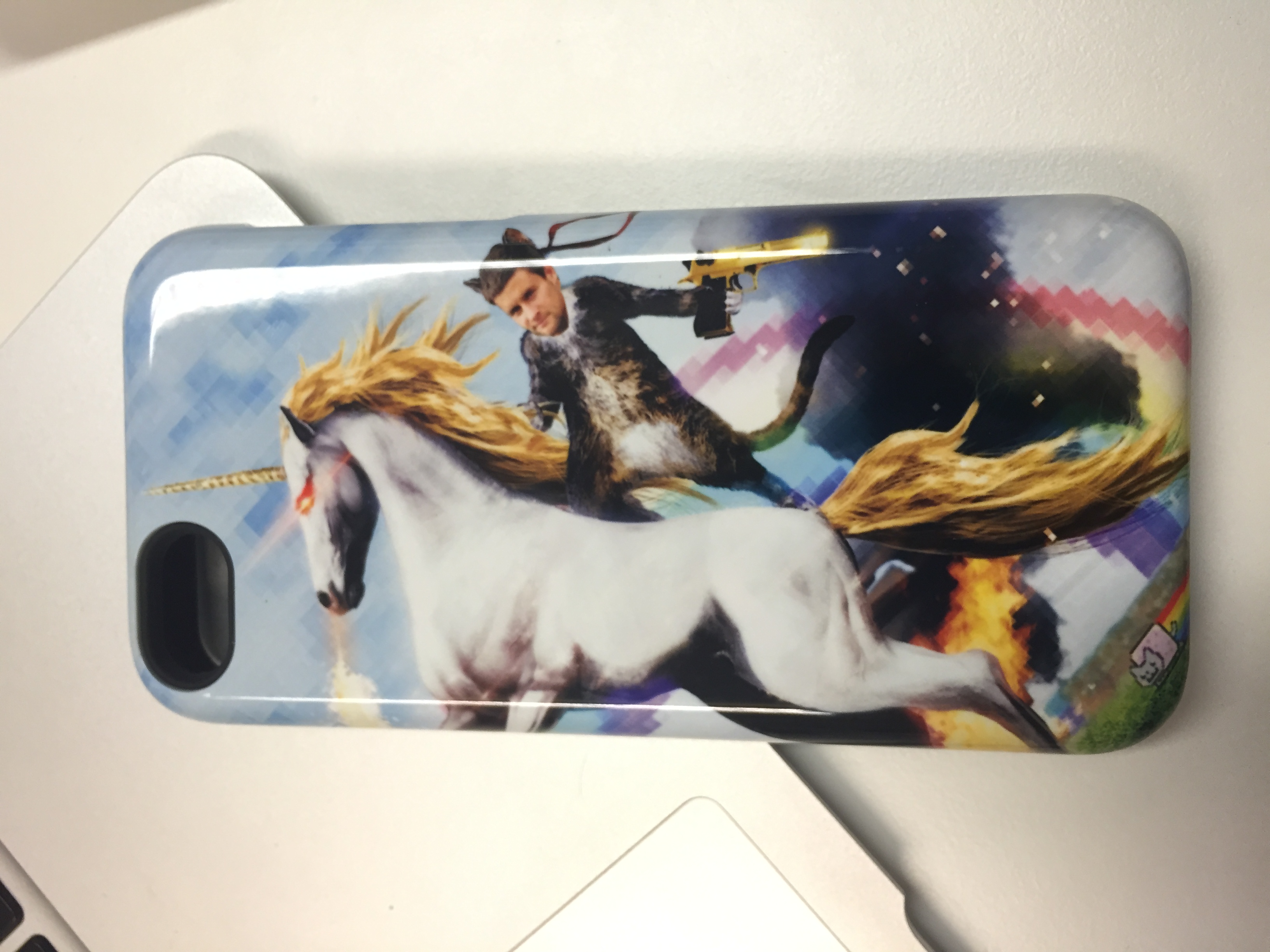Hack The Visual: "Monetising Digital Images"
Deon Botha• 2015-16-06 20:30:00A short talk on using the Kite.ly print API / print SDK to monetise digital images through physical personalised products. Given at a Hack The Visual meetup
Raw Transcript
Good evening everyone, My name’s deon and today I’m going to talk to you about “Monetising digital images” and also giving you you a little bit insight into what we do at Kite. Kite is platform for businesses & developers to turn digital images into physical personalised products.

Things like photobooks, phone cases, postcards, apparel such as t-shirts and so on.
I’m sure given the theme of this event I probably don’t need to try very hard to convince most of you that there is no shortage of apps on both mobile and desktop with large amounts of user generated image content.

One trillion photos are going to be taken this year alone. That’s a lot of digital image content. Some of our own partners using Kite look after billions of photos and images on behalf of their users. There are also a fair few artists & photographers out there with a lot of awesome content just crying out to be monetised.
Our value proposition to these guys is that they can unlock a new revenue stream that might not have been easily available to them before. They can offer our products to their end users. For each product in our range we have a fixed wholesale cost, business can then charge their users whatever takes their fancy effectively dictating the margin that they will make from each sale. They keep the difference between the end user retail cost and our wholesale cost. In return we take care of some of the trickier aspects of the purchase such as the actual product creation, packaging and worldwide shipping.
One of the coolest things about our platform is just how easy it is to integrate. We very much approached its development with API first in mind. We’ve got SDKs covering a bunch of languages and platforms and RESTful APIs for where those won’t do. If you’re a ½ competent developer or have access to one you can integrate in minutes and potentially have your users placing orders and generating revenue within the day.
For the developers in the room, I thought I’d give an example of how little effort is required to create and ship an order to a customer. And for the sake of argument lets assume the customer is your brother asking for a boring matte black phone case of weeks on end. So naturally you oblige by spending several hours lovingly photoshopping his face onto a picture of cat riding a unicorn you found on the internet. (True story — he hated the phone case).

Now to actual place an order with the Kite servers only a single request is required:
curl "https://api.kite.ly/v1.4/print/" \
-H "Authorization: ApiKey <your_public_key>:<your_secret_key>" \
--data '{
"shipping_address": {
"recipient_name": "Deon Botha",
"address_line_1": "Eastcastle House",
"address_line_2": "27-28 Eastcastle Street",
"city": "London",
"county_state": "Greater London",
"postcode": "W1W 8DH",
"country_code": "GBR"
},
"customer_email": "thomas@oceanlabs.co",
"customer_phone": "+44 (0)784297 1234",
"jobs": [{
"assets": ["http://psps.s3.amazonaws.com/sdk_static/2.jpg"],
"template_id": "i6_case"
}]
}'For the non developers in the room, this’ll probably take only a few minutes to implement. It’s pretty awesome when you actually think about what that single command does. It hits our server then results in a whole bunch of physical work getting generated involved printing the case, people packaging the order, shipping, etc. and 2-3 days later a physical phone case arrives at an address.

If phone cases aren’t your thing, maybe canvas prints or posters, whatever — no matter what product you want to order, you’d mostly only need to change a few words in this request to get at what you want. So very little effort to get personalised products in an automated fashion. And our SDKs encapsulate a lot of the complexity seen here making it even easier to have personalised products created and shipped. Our mobile SDKs also include option user journeys that can really speed up integration as it means you don’t need to build much of the product selection & payment process yourself if you don’t want to.
By the end of 2017 nearly 80% of all photos will be taken on a mobile device and I’m sure you’ve all heard before that the iPhone is the most used compact camera in the world.
It’s for this reason we first approached development of our platform SDKs, we focused on mobile first. In fact integration can be even simpler with our mobile SDKs as they’re are bundled with optional shopping and checkout UI experiences that convert well with users and to help speed up integration. I thought I’d show you this shopping experience in the context of one of our partner apps.